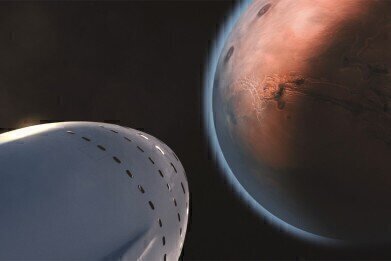Industrial News
Are there Aliens on Mars! Exploring Space with Chromatography
Jun 08 2015
Man has wondered “Are we alone?” for many years. Astronomers and Hollywood have long portrayed aliens in many different forms — little green men from Mars and monsters from Outer Space being the favourites. But it is life on Mars that has always captured the imagination — from HG Wells’ Victorian masterpiece “The War of the Worlds” to the 1996 film “Mars Attacks”, the idea of life on Mars has always intrigued man.
Let’s take a look at the ideas helping scientists decide if can aliens exist and the part chromatography could play in deciding if there is life on Mars.
Alien Worlds
With the launch of the Kepler space telescope in 2009 the search for habitable worlds and aliens has made massive strides forward. Kepler has now found over 1000 exoplanets and identified thousands of potential exoplanets. Kepler has given scientists an accurate means of measuring the light curve from a distant star. By monitoring the light curve we can detect transiting exoplanets, a planet orbiting a star.
Even more exciting is that the amazing techniques used by astronomers has allowed us to identify Earth sized exoplanets occupying a star’s habitable zone — possible homes for alien life.
Habitable Zones and Life
The habitable zone is the ring shaped area around a star where scientists think the conditions for life are just right — for example: water can exist, the temperature is just right and the planet is in a stable orbit. Luckily for us, Earth lies in the middle of the Sun’s habitable zone — which stretches from just outside Venus’ orbit to Mars, which lies at the edge of the zone. So could there be life on Mars?
Life on Mars
If there were little green men running around Mars it is probable that we would have seen them by now — we have excellent hi-res images of the Martian surface. Some scientists think that the best chance of finding evidence of life on Mars will be in fossilized chemicals that could once have belonged to some form of life. To help in this search a team from the University of Kansas has recently published research about a new technique designed to help identify just such a piece of evidence.
In a University of Kansas press release, Craig Marshall, one of the article’s authors stated “If we’re going to identify life on Mars, it will likely be the fossil remnants of the chemicals once synthesized by life, and we hope our research helps strengthen the ability to evaluate the evidence collected on Mars”.
In an article titled ‘Raman spectroscopy as a screening tool for ancient life detection on Mars’ the team report on a technique which combines Raman spectroscopy with GC-MS. The authors say this gives the best chance of detecting biomarkers and conclusive evidence for life on Mars. Chromatography has helped in the search for aliens in space before, as discussed in Analysing Space Dust for the Ingredients of Life Using Chromatography.
Digital Edition
Chromatography Today - Buyers' Guide 2022
October 2023
In This Edition Modern & Practical Applications - Accelerating ADC Development with Mass Spectrometry - Implementing High-Resolution Ion Mobility into Peptide Mapping Workflows Chromatogr...
View all digital editions
Events
Apr 23 2024 Kintex, South Korea
Apr 23 2024 Seoul, South Korea
Apr 28 2024 Montreal, Quebec, Canada
May 05 2024 Seville, Spain
May 15 2024 Birmingham, UK














